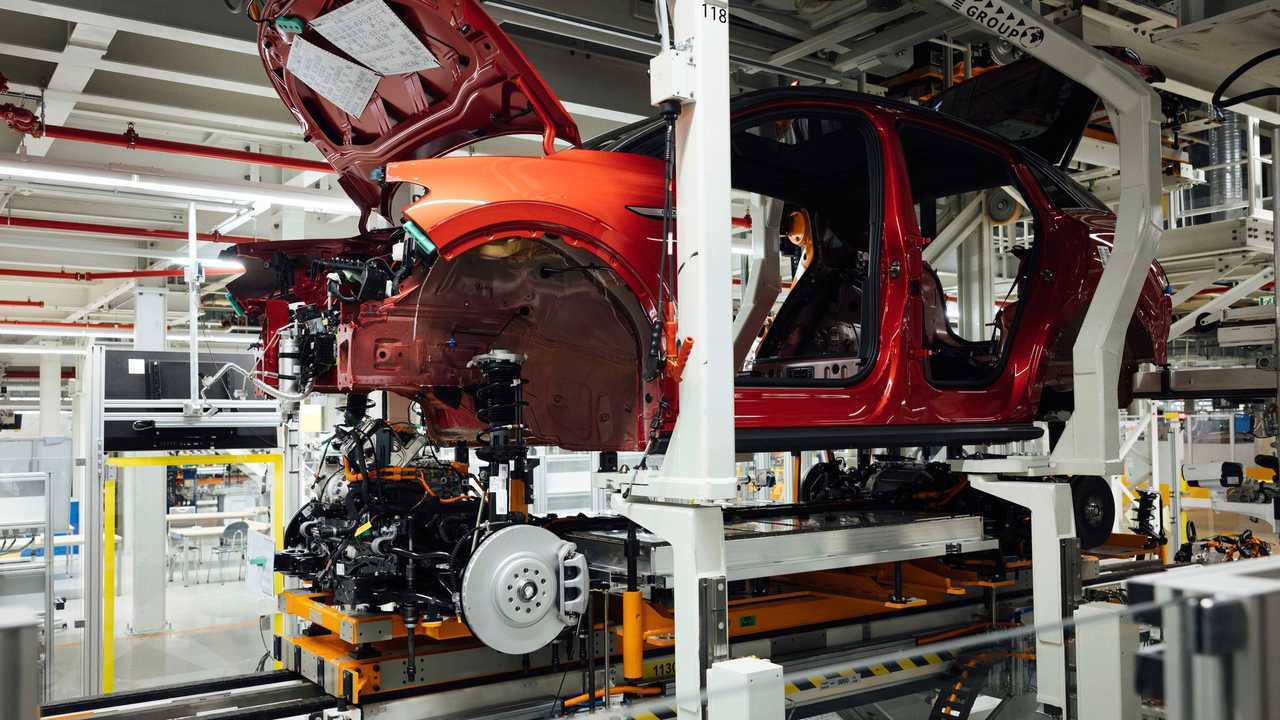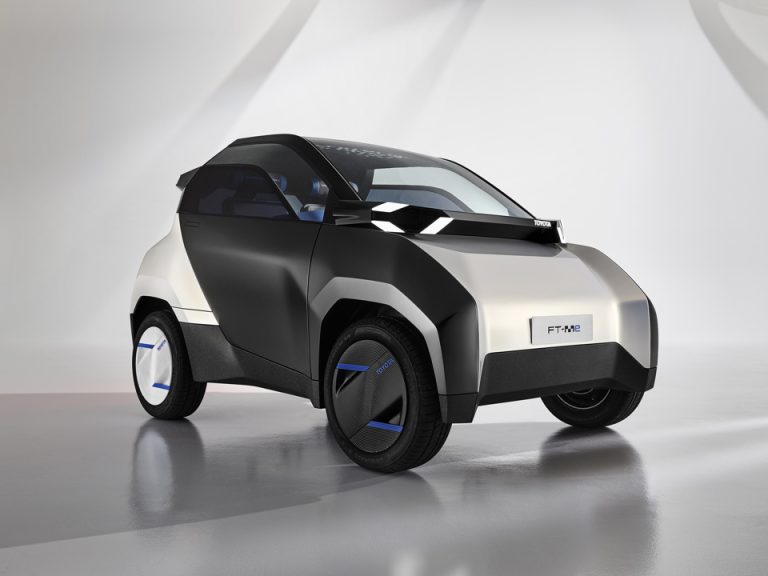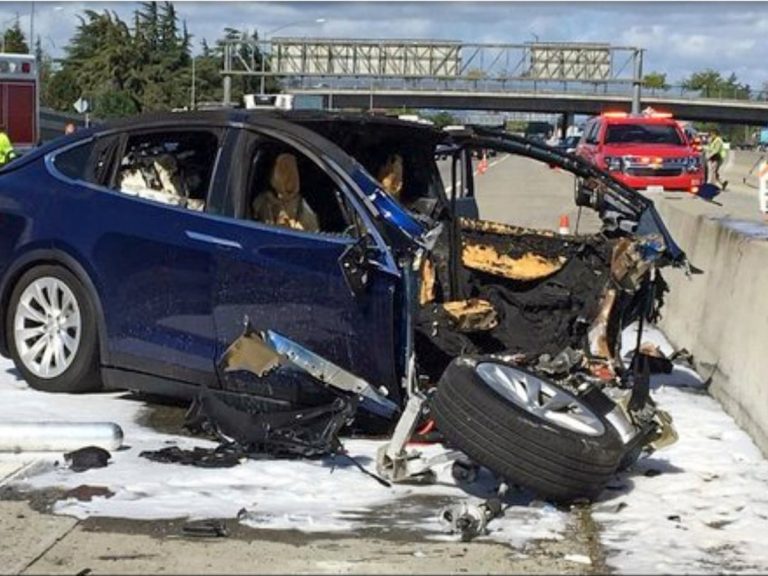Volkswagen Halts German Electric Vehicle Production Amid Tariff Challenges and Sluggish Demand

Volkswagen’s EV Production Slowdown: A Closer Look at the German Factories
In recent days, Volkswagen (VW) has faced a challenging period as its German electric vehicle (EV) factories reel under a slowdown in demand and the burden of U.S. tariffs. This op-ed takes a closer look at how the iconic automaker is responding to these tricky parts of the market and how the situation reflects broader trends in the EV industry. As we poke around into this issue, it becomes clear that VW’s recent decisions are not just isolated moves—they are part of a more complex ecosystem of production, workforce management, and global economic tension.
As one of the leading EV sellers in Europe—right behind, and in some cases, even ahead of Tesla—Volkswagen now finds itself confronted with headwinds that are both challenging and nerve-racking. In its German plants, the reduction in production hours at facilities in Emden and Hanover is a poignant reminder that the road ahead for EVs is far from smooth. In this article, we’ll dig into the reasons behind these production cuts and explore the wider implications for the industry.
Slowing Demand: The Tricky Parts of EV Growth
The rapid growth of the EV market was something many industry watchers and automotive enthusiasts had been looking forward to. Yet, the current slowdown in growth is proving to be one of the more intimate and complicated pieces that VW must manage. Even as VW brand remains a top seller of EVs in Europe, demand has not lived up to the once optimistic projections, leaving VW to scale back production in key regions.
There are several reasons underpinning this trend. When one analyzes the state of the EV market, it is crucial to acknowledge:
- Increasing competition from other automakers who are also shifting gears towards EV technology
- Market hesitancy due to the current economic climate and changing customer preferences
- The confusing bits of supply chain disruptions that still plague parts of the automotive manufacturing process
- Heightened regulatory scrutiny that may be putting some customers off from taking the plunge into EV ownership
For VW, these factors combine to create an environment where even the formidable VW brand finds emerging EV demand a bit off-putting. Rather than overstretching production capacities, the company is opting to pull back employee hours at its Emden plant—a decision that reflects the delicate balance between workforce stability and economic pressures.
U.S. Tariff Impacts: Navigating a Tense Global Landscape
Beyond the domestic market issues, VW’s production challenges are compounded by external pressures such as U.S. tariffs. The tariffs, which target some of the components and finished products in the EV segment, add another layer of complicated pieces that VW must find its way through. U.S. trade policies have always had the potential to reshape global supply chains and affect production decisions in unforeseen ways.
This tariff issue, in particular, is emblematic of the tangled issues often seen in international trade. In a bid to protect domestic industries or specific economic interests, tariffs can inadvertently disrupt the smooth transmission of goods across borders. In VW’s case, the current U.S. tariff hit has not only reduced the profitability of exports but has also added to the nerve-racking complexity of managing production levels in the face of uncertain demand.
As the global EV market continues to evolve, manufacturers like VW must carefully figure a path that allows them to balance global ambitions with local challenges. The need to adjust production swiftly, while keeping an eye on potential tariff-related costs, is both a delicate and critical business parameter that cannot be ignored.
Workforce and Production Adjustments: Managing the Employee Impact
When production levels are reduced, the first group to be impacted is usually the workforce working on the production lines. VW’s decision to cut back employee hours at the Emden plant is a clear indicator that the company is trying to balance its operational costs while minimizing workforce disruptions. This approach, while potentially smoothing over short-term challenges, raises important questions about the long-term implications for employee morale and job security in the automotive sector.
The production adjustments are not uniform across all facilities. For instance, while Emden sees reduced hours amid slow EV growth, VW’s Hanover plant has announced a five-day halt in the production of models such as the ID Buzz and T7 Multivan during the autumn holidays. This shift in schedule—albeit temporary—illustrates how VW is trying to manage production loads without committing fully to workforce reductions or permanent shutdowns.
| Plant Location | Model Affected | Adjustment Made | Reason |
|---|---|---|---|
| Emden | ID4, ID7 | Reduced Employee Hours | Slower than anticipated EV demand and adjustments in market strategy |
| Hanover | ID Buzz, T7 Multivan | Five-day Pause during Autumn Holidays | Seasonal production adjustments reflecting current demand and staff scheduling |
This table highlights the subtle parts of VW production changes that stem from both local market conditions and global economic pressures. It is a stark reminder that every decision in the automotive industry can have a ripple effect on the lives of many, from the workers on the factory floors to the executives managing global supply chains.
Industry Repercussions: The Broader EV Manufacturing Landscape
Volkswagen is far from the only automaker facing these tricky parts of slowing EV demand and tariff-related issues. The entire EV manufacturing landscape is grappling with weird twists and turns as companies rush to secure their positions in an unpredictable market.
Several industry players have had to adjust their strategies in light of similar challenges:
- Tesla: Once considered invincible in the EV market, Tesla has also faced bouts of production pauses and quality control reviews as it expands its global manufacturing network.
- General Motors: The American giant is rethinking its EV rollout schedule as it navigates both domestic market uncertainties and shifting global supply chain dynamics.
- Asian Manufacturers: Several companies in Asia are stepping up investments in EV technologies, yet they too are not immune to challenges such as tariff pressures and evolving consumer preferences.
When we take a closer look at these developments, it becomes evident that the EV industry, though on the cutting edge of innovation, is full of problems that require constant recalibration. Economic headwinds, shifting regulatory landscapes, and supply chain bottlenecks all contribute to an environment that is as challenging as it is full of opportunity.
Underlying Causes: Digging into the Subtle Parts Behind the Production Cuts
There are several underlying reasons why VW is choosing to scale back production at its German facilities. To understand the context more fully, here are some of the key factors at play:
- Market Overestimation: In recent years, the anticipation for rapid EV adoption may have led to overoptimistic production targets. When reality does not match these expectations, companies are forced to adjust their outputs accordingly.
- Economic Uncertainty: Global economic conditions have been on edge, with consumers showing hesitation in making significant purchases, especially those that involve newer and evolving technologies like EVs.
- Supply Chain Challenges: While the global automotive production system has made headway in overcoming some of the supply chain’s tangled issues, intermittent disruptions still present a challenge to achieving smooth operations.
- Competitive Pressures: Emerging competitors armed with innovative technologies and aggressive pricing strategies have added an extra layer of tension in the EV market.
By addressing these underlying factors, VW is essentially trying to find its way through whether to expand, contract, or reallocate production in the most efficient manner. These adjustments are a classic example of how even established giants must sometimes take a cautious step back to reassess and retool.
Consumer Sentiment and the EV Purchase Decision
In the midst of production cuts, consumer sentiment plays an equally important role in shaping the future of the EV sector. Many potential EV buyers find themselves wrestling with tricky parts when making the purchase decision. They’re not only deciding between traditional combustion models and electric vehicles but also weighing in on seemingly overwhelming economic uncertainties.
The subtle details influencing consumer behavior include:
- Price Fluctuations: As production slows, the price of EVs may eventually increase due to the scarcity of supply. This prospect may deter budget-conscious buyers.
- Technological Readiness: Some consumers remain skeptical about the long-term reliability of newer EV technologies, preferring to stick with what they know.
- Incentive Programs: Government subsidies and tax credits have historically been key to pushing EV adoption. However, delays or changes in these programs can quickly shift consumer interest.
This balancing act between consumer expectations and what the market can realistically provide is a central point of tension. It is also a cautionary tale—for companies like VW—to continuously adapt and figure a path that accommodates both production limits and evolving buyer needs.
Global Trade Dynamics and the Automotive Sector
The impact of U.S. tariffs on VW’s production plans is just one facet of a broader network of global trade dynamics affecting the automotive industry. In many ways, this situation serves as a reminder that no market operates in complete isolation. Trade policies, currency fluctuations, and international relations are all intertwined with local production decisions.
At its core, the automotive industry is dependent on the smooth exchange of components, knowledge, and finished goods across borders. With tariffs and other trade barriers in play, companies must continually adjust their strategies to steer through these challenging waters. In VW’s case, bargaining with U.S. tariffs is an exercise in managing both the small distinctions of pricing and the larger picture of global competitiveness.
A simple breakdown of the trade-related challenges might look like this:
- Cost Increases: Tariffs can lead to higher production costs which are often passed on to consumers, potentially reducing demand further.
- Supply Chain Disruptions: Changes in trade policy can force companies to reevaluate their supply arrangements, affecting everything from the sourcing of raw materials to the shipment of finished vehicles.
- Market Uncertainty: The unpredictable nature of international trade policies adds a nerve-racking layer of uncertainty for future planning.
Learning from the Past: Historical Production Adjustments in the Auto Industry
Volkswagen’s current predicament is not unprecedented. Over the decades, the automotive sector has frequently had to adjust production in response to economic cycles, technological shifts, and supply chain hurdles. The recent slow down in Germany, while significant, is one chapter in a long history of industrial adjustments.
Looking back, notable moments include:
- The Oil Crisis of the 1970s: When fuel prices soared, automakers had to pivot quickly to address both consumer preferences and economic pressures.
- The Financial Crisis of 2008: This period saw widespread production cuts and layoffs across the industry, as consumer spending and credit availability shrank.
- The Semiconductor Shortage of Recent Years: This more recent challenge forced many companies to reconfigure manufacturing schedules, leading to production halts and adjusted strategies.
Each of these episodes involved negotiating with a range of tricky parts and hidden complexities. The current situation at VW, influenced by tariff struggles and slower EV demand, falls into a similar historical pattern. What does this imply for the future? Much like in previous cycles, companies that adapt quickly and efficiently are likely to come out ahead, ready to seize opportunities when market conditions improve.
A Look at the Strategic Shifts: Forward-Thinking Initiatives and Adaptations
In response to these challenges, VW is not merely cutting production—it is also inching towards strategic adaptations that may pave the way for future growth. The current production slowdown is prompting the company to re-examine its production schedules, marketing approaches, and overall strategy in what is arguably a delicate balancing act.
Some of the key strategic shifts include:
- Rethinking Production Volumes: Instead of blindly ramping up production, VW is opting for a more conservative and measured approach that aligns output with actual demand.
- Diversification of Markets: With uncertainties in the U.S. market due to tariffs, VW is eyeing markets in Asia, the Middle East, and other regions. The launch of China-made vehicles for export—despite being a challenging path—is one illustration of how global players are trying to diversify their revenue streams.
- Enhanced Research and Development: To stay ahead in the increasingly competitive landscape, VW is investing in innovative EV technology. This investment is crucial for overcoming the nerve-racking competitive pressures from both established companies and new market entrants.
- Adapting Workforce Management Practices: Whether it is through temporary production cuts or flexible shift patterns, adapting how workforce hours are managed will be key to maintaining operational viability without causing long-term adverse effects on employee morale.
These initiatives underline that while the current environment is undeniably tense, it also offers VW a chance to recalibrate its operations. By improving the nitty-gritty aspects of production planning and diversifying its portfolio across different markets, the automaker is setting the stage for a potentially smoother ride in the coming years.
The Role of Government Policies and Industry Regulations
At a time when global markets are filled with twists and turns, government policies and industry regulations act as crucial signposts. They are not only designed to regulate the market but also to ensure a stable competitive environment for all players involved. In the case of VW’s production cuts, there are several key regulatory aspects we need to consider:
- Emissions and Safety Standards: With increasing environmental concerns, regulations governing emissions and the safety of electric batteries are becoming more rigorous. This adds an extra layer of the complicated pieces that manufacturers must address.
- Trade Policies: Tariffs, such as the ones imposed by the U.S., have significant ramifications not only for pricing but also for strategic decision-making. These policies continue to shape how companies plan their manufacturing and export strategies.
- Incentives for EV Adoption: Government-backed incentives, including tax credits and rebates, are essential for driving consumer interest in electric vehicles. Any shifts in these programs can quickly translate into changes in market demand.
For VW and its peers, understanding these policy changes and working through the subtle details is key to building a future-proof strategy. By staying in tune with regulatory developments, automakers can better prepare for shifts in demand and adjust production plans accordingly.
Consumer Confidence: The Must-Have Ingredient for Market Recovery
Even as VW and other automakers face production cuts and tariff challenges, the role of consumer confidence cannot be overstated. In an industry that is as sensitive to shifting market sentiments as the EV sector, establishing and maintaining trust amongst potential buyers is super important.
For many consumers, the decision to invest in an electric vehicle comes down to several must-have factors:
- Reliability: Prospective buyers are looking for vehicles that prove reliable in both performance and safety.
- Cost-Efficiency: Despite the potential for long-term savings, the initial price outlay for EVs can be seen as a barrier if it is perceived to be too high.
- Future-Proofing: With technology evolving rapidly, customers want to ensure that the vehicle they choose today will not quickly become obsolete.
It is therefore imperative that manufacturers like Volkswagen manage their production targets in a way that not only matches current demand but also instills confidence in the market about the viability and forward trajectory of EV technology. Strategic production cuts, if communicated transparently, can be positioned as a responsible response to shifting market conditions rather than a sign of underlying failure.
Innovations Shaping the Future of Electric Vehicles
The current production slowdown at VW’s German plants has prompted us to take a closer look at what innovations might shape the future of electric vehicles. While there are undeniable challenges at present, the EV sector remains one of the most exciting arenas for technological breakthroughs and sustainable practices.
Key areas where innovation is driving change include:
- Battery Technology: New battery chemistries and improved energy densities promise to extend driving ranges and reduce charging times. These developments are pivotal for maintaining consumer interest in EVs.
- Charging Infrastructure: The expansion and upgrade of charging networks are critical for supporting increased EV adoption. This not only helps consumers but also reassures manufacturers that widespread support systems will facilitate easier use of their products.
- Smart Manufacturing: Advances in production technology, including automation and data analytics, are enabling companies to optimize their assembly lines. These improvements are key to managing production volumes more efficiently during periods of fluctuating demand.
- Vehicle Connectivity: From advanced navigation systems to integrated telematics, the interconnectedness of modern EVs illustrates how technology can enhance both performance and buyer satisfaction.
Volkswagen, like many industry players, is investing heavily in these areas. Such innovations not only help address the immediate challenges of supply chain and production—but they also lay the groundwork for a resilient future, where companies are better prepared to figure a path that seamlessly integrates old production models with new technological advancements.
Lessons for Small Business and Industrial Sectors
While much of the discussion has centered around mega-automakers like Volkswagen, the effects of production slowdowns and tariff-induced challenges resonate well beyond the automotive world. Small businesses and industrial manufacturers often face similar tricky parts when adapting to sudden shifts in market demand.
Here are a few takeaways from VW’s experience that may benefit smaller businesses:
- Agility is Key: The ability to quickly steer through economic uncertainties can be a decisive factor. Small businesses might not have the large buffers available to corporations, so being nimble is essential.
- Transparent Communication: When there are changes—whether in production or service offerings—communicating these clear reasons to stakeholders can alleviate some of the overwhelming tension.
- Innovative Adaptation: Embracing new tech and adjusting business models be it through digitization or diversified product lines can help businesses stay competitive even during recessive periods.
A table summarizing these lessons might look like this:
| Lesson | Application |
|---|---|
| Agility | Quick response to market changes, revising plans as needed |
| Transparent Communication | Keeping stakeholders informed during adjustments |
| Innovative Adaptation | Investing in technology and diversification |
These small businesses, much like large industrial manufacturers, can learn from Volkswagen’s measured approach. The key is to continually assess market conditions, remain flexible, and not shy away from making necessary changes—no matter how overwhelming they might initially seem.
Looking Ahead: The Future Road for Volkswagen and the EV Sector
Volkswagen is in a transitional phase. The decision to reduce production at its Emden and Hanover plants is symptomatic of larger, global trends that extend far beyond a single automaker. As we figure a path through this current slowdown, the necessity to adjust production in real-time is both a tactical decision and a strategic move for the future.
Several factors will likely shape the outlook for VW and the broader EV market in the coming years:
- Economic Recovery: A rebound in consumer spending and global economic stability may eventually spur demand, allowing VW to ramp up production once again.
- Technological Innovations: Continued advancements in battery technology and smart manufacturing could reduce production costs and enhance efficiency.
- Shifts in Regulatory Policies: Adjustments in trade policies, tariffs, and environmental regulations will undoubtedly impact production strategies and market dynamics.
- Competitive Landscape: The way in which competitors respond to the current challenges could also influence the market share and long-term plans of all EV manufacturers.
Volkswagen’s foray into rebalancing its production strategy—along with its investments in R&D and market diversification—is something that industry analysts are watching closely. It not only signals VW’s determination to remain a key player in the EV market but also sets a precedent for how legacy manufacturers can adapt during periods loaded with issues and global tension.
Conclusion: Steering Through Uncertainty with Cautious Optimism
In conclusion, the recent production cuts at VW’s German factories provide a snapshot of a larger force at work in the automotive world. The slowdown in EV demand, compounded by U.S. tariffs and other global economic pressures, is forcing established players to carefully reassess their strategies. While the present may seem intimidating, it is also a time of necessary learning and innovation.
Volkswagen’s actions—whether it’s reducing employee hours at Emden or pausing production at Hanover during the autumn holidays—serve as a reminder that in the automotive sector, as in many other industries, the twists and turns of the market require both flexibility and forward-thinking. The production challenges, tariff struggles, and shifting consumer sentiments are tricky parts that demand not only immediate tactical adjustments but also strategic long-term planning.
For consumers, small businesses, and even large-scale industrial manufacturers, the lessons are clear: remain agile, keep communications open, and never shy away from the fine points of adapting to a dynamic global market. As the EV sector matures, the nerve-racking changes we see today may well pave the way for a more sustainable and innovative tomorrow.
While uncertainty looms large, cautious optimism remains the must-have ingredient. By understanding the tangled issues behind these production adjustments and embracing both technological innovation and strategic planning, Volkswagen—and the EV industry as a whole—can weather this period of slow demand and prepare for a future that is both promising and resilient.
Only time will tell how these current challenges will shape the path forward, but one thing is clear: in a market filled with subtle details, slight differences, and constant change, having a clear vision and a flexible approach is key to staying ahead.
Originally Post From https://www.autonews.com/volkswagen/ane-vw-cuts-ev-output-in-germany-on-us-tariffs-0925/
Read more about this topic at
Regulatory uncertainty slowing US electric vehicle adoption
Behind the EV Slowdown




